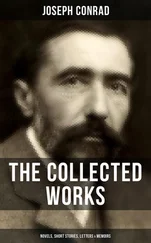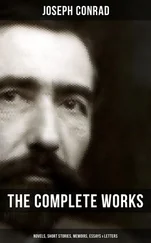Outside their enclosed world, there was revolution in France and political unease in Britain. The word ‘scientist’ was coined; invention and experimentation was creating a new world of possibility. In September 1830, Stephenson’s Rocket raced along its tracks at 16m.p.h. from Liverpool to Manchester carrying passengers as well as freight for the first time, promising a revolution in travel particularly for the expanding urban populations.
Paxton was poised to burst into action in the two most fruitful and exciting decades of his life, years where it hardly seemed possible for him to draw breath for new ideas and experiments.
*The fashion for these odd shaped evergreen trees was fed by the publication, in 1831, of a complete listing of all known conifers in cultivation by Charles Lawson. In 1838 he followed this with the publication of Pinetum Britannicum . By the end of the nineteenth century, it is estimated that over 250 different species of pines were available.
*By Edwin Budding. Illustrated in the Gardener’s Chronicle of that year. Uncatalogued material in the Chatsworth Collection shows that a Ferrabee mower was purchased in 1833. At an early stage Ferrabee shared rights in the mower with patentee Budding and licensed Ransomes of Ipswich to make them.
‘Iwas just going to write and tell you how much pleased I was by the amount of your prizes in the Sheffield paper, when I got your dismal letter about the frost … I am coming to look at what is left on 1 June. Please tell Mrs Gregory.’ So wrote the Duke to Paxton on 14 May 1831. The frost had also destroyed the prize dahlias at Chiswick, demolished the magnolia leaves and ruined the blossom and vegetables. If this was not the first letter from the Duke to Paxton, it is the earliest to have survived, and it points at the priority now given by the Duke to all things horticultural. From this time, his diaries become peppered with references to plants and trees seen and coveted, to visits to the famous nurseries in and around London, and to the efforts and results of other gardeners at many of England’s great estates and smaller private gardens.
If the improvements at Chatsworth were intended to provide a grand display case for his passionately collected works of art, literature and sculpture, the garden and grounds soon became an equal obsession. Paxton was beginning to fashion a pattern of new walks through the woods, as well as paths and slopes between the orangery and the flower garden near the house. His enthusiasm was infectious to the beauty-loving aristocrat and the gardener’s early successes and obvious ability began to fire the Duke’s somewhat competitive and acquisitive nature. He started to study botanical books avidly, swept up in a rising intoxication for all things rare and ornamental.
Together, the Duke and his gardener would walk the woods and strike out on to the moors above the house, in a boyish and delightful search for new springs that could be diverted to feed the waterworks. The Duke visited gardens in Canterbury in September, noting some tulip trees which must be had for Chatsworth. When he arrived back, he visited the kitchen garden and saw all Paxton’s rarities. He was in raptures. Chatsworth had become, quite simply, ‘delicious’, his enjoyment of it filling the pages of his diary and his letters. Lady Newburgh, a Derbyshire neighbour, wrote to Blanche that ‘Chatsworth is getting every day more beautiful inside and out, you will hardly know it again, so much has been done.’
From the beginning of the year, across the country there was almost no talk but of ‘the Bill’. The first reading of the Great Reform Bill – introduced by the Whigs and designed to begin a realignment of power through the abolition of rotten boroughs and the extension of the vote to the prospering middle classes and male householders – was heard in the Lords at the end of September. It had a rough ride and on 8 October it was rejected. There were riots in Derby, Bristol and in manufacturing towns across England. In December, on its second reading, it was thrown out again by a majority of 160. Like its continental cousins, Britain seemed on the verge of potential revolution and the army were put on alert.
The Liberal Duke was alarmed and distressed – and he went shopping. Then he wrote jubilantly to Paxton: ‘I have bought you the Araucaria excelsa!’ He fussed about the safe arrival of the monkey puzzle, dreading delay on the canals by frost. He also sent heaths, and signalled his great desire for a glorious red euphorbia, for an amaryllis, for Barringtonia and for Eucalyptus desfoliata , once the stoves in which they could be cultivated had been completed.
If the urban population was disaffected and angry, in the enclosed and rarefied country air of the Chatsworth estate, Paxton had different distractions. His second daughter was born in April and named after the Duke’s niece, Blanche. He was also working on plans to launch a new gardening magazine, The Horticultural Register and General Magazine , jointly edited with Joseph Harrison, the gardener to Lord Wharncliffe at Wortley Hall near Sheffield. The first issue, published in July, thrust Paxton into the public arena. He was just short of his 28th birthday.
Plantsmen, eager for information on new plants and their cultivation, were already well served by the early Botanical Magazine and its rival the Botanical Register . The Horticultural Society issued its Transactions and nurseries their catalogues, including Loddiges’ Botanical Cabinet . All these contained coloured plates of foreign varieties, but they were expensive, and hardly suited to the ‘practical’ gardener. The most extensive horticultural journalist of his day was John Claudius Loudon. The Gardener’s Magazine included detailed reports of the activities of the societies, of nurseries and gardens visited, of recently published books and periodicals as well as articles on all aspects of the gardener’s responsibilities. Most radical were Loudon’s own articles, advocating novel and revolutionary ideas such as national schooling, adult education and green belts around cities.
Many other, smaller magazines came and went during the late 1820s, stimulated by an increasingly literate reading public and by the new methods of steam printing which reduced the costs of production. What exactly drove Paxton to set up a new monthly magazine, and how he met Harrison, is unclear. It may be that part of Sarah’s dowry was used to fund the project. It was a bold step, but he was never timid.
The first volume of the Horticultural Register stated its intention to ‘embrace everything useful and valuable in horticulture, natural history and rural economy … It is evident that a taste for horticulture in all its branches, both of vegetable culture and propagation, also landscape and architectural gardening, has within the last twenty years very rapidly increased, and a corresponding improvement has consequently attended it; for at no time has it reached so high a state of perfection as the present.’ Paxton was at pains to emphasise that the readiness of garden proprietors (like his Duke) to encourage their gardeners to experiment and develop their art was a fundamental factor in effecting this change. The editors wanted to produce an affordable magazine, directed at all classes of society, to circulate it as widely as possible and to include the broadest possible array of articles ‘in so plain and intelligible a form … as to be within the comprehension of all its readers’.
Including articles ranging from the grandest of horticultural schemes to the botanic minutiae of particular plants, the magazine would be divided into five parts, covering gardening in all its branches. There were reviews of and extracts from articles in other horticultural and rural publications, news of discoveries and interesting accounts of natural history, reviews of books and journals published and ‘miscellaneous intelligence’. Neat engravings would serve as illustration, the need for correct descriptions of all new and valuable plants would be met and it would close with a monthly horticultural calendar – a novel approach to managing the monthly practicalities of the gardener’s art which has been copied up to the present day. In order to include as much as possible, without increasing its price, the magazine was printed in small type and, at the end of each year, a bound volume contained additional lists of fruit and flowers recently classified, and of the most successful fruits and vegetables already in cultivation.
Читать дальше











